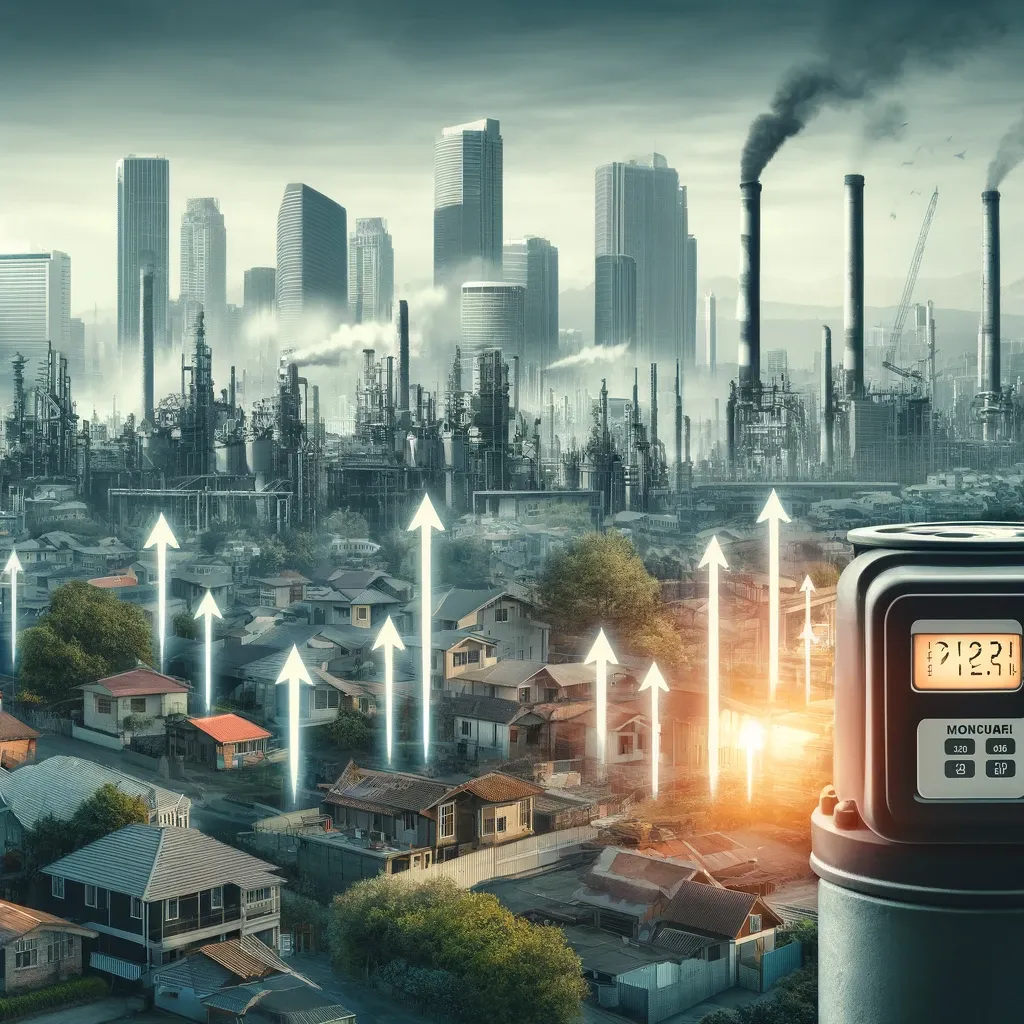Why are urban gas rates increasing? What does the term ‘city gas bill bomb’ mean? Find out the reasons behind the city gas rate hikes and their impact on consumers in this detailed analysis.
Urban gas rates have been a hot topic lately, especially with rising concerns about energy costs. From residential homes to industries, everyone is feeling the pressure of increasing utility bills. This article will explore the reasons behind the urban gas rate increase, delve into the ‘city gas bill bomb,’ and examine the broader economic factors influencing these changes.
Urban Gas Rate Increase: What Does It Mean?
The urban gas rate increase refers to the rising cost of natural gas supplied to residential, commercial, and industrial sectors in cities. Over recent years, consumers have noticed their monthly gas bills creeping up, with some even describing it as a “city gas bill bomb.” This term symbolizes the shock and financial strain caused by the sharp increase in gas rates.
1. Global Supply and Demand
One of the primary reasons behind the urban gas rate increase is the global supply and demand imbalance. Natural gas is a global commodity, and factors like geopolitical tensions, weather conditions, and changes in demand from large economies can all have a significant impact on prices.
For instance, when major gas-producing countries like Russia or the United States face political instability or shift their production strategies, it can lead to sudden price hikes that affect cities worldwide. Additionally, the growing global demand for energy, especially in developing nations, increases competition for available resources, further pushing gas prices higher.
2. Infrastructure and Maintenance Costs
Another reason for the increase in urban gas rates is the growing costs associated with maintaining and upgrading gas infrastructure. Gas pipelines, storage facilities, and metering systems require constant maintenance and, in some cases, costly upgrades to ensure safety and efficiency.
As cities grow and the demand for energy rises, the cost of upgrading these systems often falls to consumers in the form of higher utility bills. New technologies and sustainable gas distribution systems are often needed, but these improvements come with significant price tags.
3. Regulatory Changes and Taxes
Governments often play a role in shaping gas prices through regulatory changes and taxes. In many countries, taxes on energy consumption are rising as part of efforts to promote sustainability and reduce carbon footprints. These changes typically trickle down to consumers, leading to higher bills. Additionally, stricter regulations on emissions and fuel efficiency can increase production costs, further contributing to the rate hikes.
City Gas Bill Bomb: What Does It Mean for Consumers?
The term “city gas bill bomb” describes the financial shock that consumers experience when they open their monthly utility bills and find the cost of gas has significantly increased. This is a growing concern, especially in cities where gas is the primary source of heating and cooking. For many, this rate increase can feel overwhelming and hard to manage, leading to financial strain and frustration.
1. Impact on Household Budgets
City gas bill increases can make a significant dent in household budgets, particularly for families with low or fixed incomes. Many individuals and families rely on natural gas for heating their homes in the winter, and with colder months approaching, the hike in prices can be especially painful.
For example, in some cities, families who used to pay $100 monthly for gas could find themselves paying $150 or more for the same usage. This increase, though seemingly small, can add up over time, making it harder for families to cover other essential expenses.
2. Rising Energy Poverty
As energy costs continue to rise, a phenomenon known as “energy poverty” becomes more prevalent. This occurs when people are unable to afford adequate heating or energy services, which can have serious health implications. Many residents of lower-income neighborhoods may already be struggling to pay for basic needs, and an increase in gas rates can push them further into financial hardship.
Governments and utility companies have recognized this issue, and in some cases, assistance programs are being implemented to help those affected by the rising gas bills. However, these programs often have limited availability and may not fully mitigate the financial strain.
Reasons for Raising City Gas Rates: What’s Driving the Trend?
There are several factors contributing to the ongoing trend of urban gas rate increases. It’s essential to understand these drivers to better anticipate future rate hikes and adjust accordingly.
1. Increased Costs of Natural Gas Production
As mentioned earlier, the costs of producing natural gas have been rising due to a variety of factors. From the extraction process to transportation and distribution, every step of the gas supply chain incurs costs. As these costs increase, utility companies pass them onto consumers.
2. Energy Transition and Sustainability Goals
Governments worldwide are pushing for cleaner, greener energy sources to reduce carbon emissions. The transition to renewable energy often comes with significant upfront costs for energy companies. To meet sustainability targets, utility companies may raise gas rates to help fund investments in renewable energy infrastructure, such as wind and solar power.
3. Inflation and Economic Factors
Inflation affects virtually every sector of the economy, and energy is no exception. As inflation increases, so do the costs of everything related to the production, distribution, and consumption of gas. This trickles down to consumers in the form of higher bills.
Moreover, economic uncertainty and fluctuating currency values can lead to unpredictable gas prices. For instance, when the value of a country’s currency drops against global markets, it can make imported gas more expensive, further contributing to rate hikes.
Conclusion
The urban gas rate increase is a complex issue influenced by global supply and demand, infrastructure costs, and government policies. For many consumers, the term “city gas bill bomb” symbolizes the shock of rising energy costs, which can be particularly challenging for low-income households. The reasons behind the rate hikes—such as increased production costs, energy transition goals, and economic factors—are interconnected, and understanding them can help consumers better navigate the changing landscape of urban gas rates. As these trends continue to evolve, it will be important for consumers to stay informed about upcoming rate hikes and explore any available assistance programs.
“Energy, like the air we breathe, is vital. But when it costs too much, it’s not just a burden—it’s a problem.”






